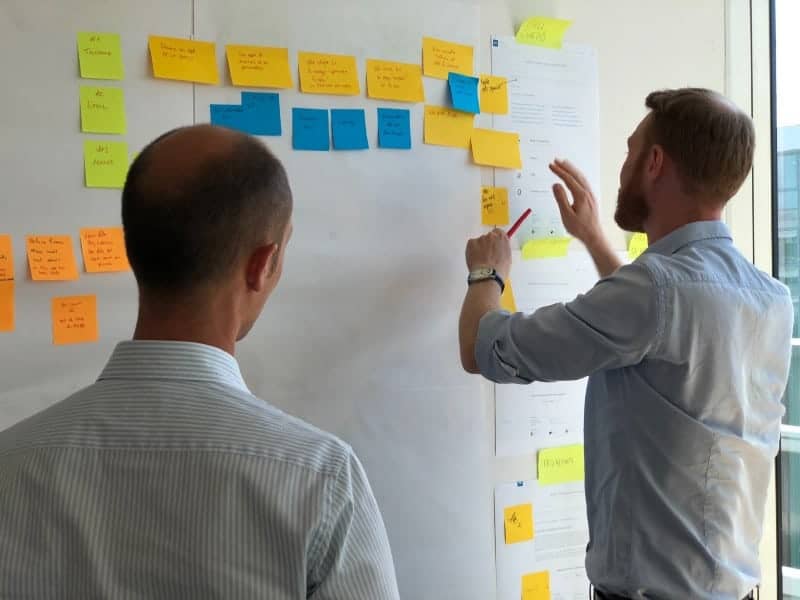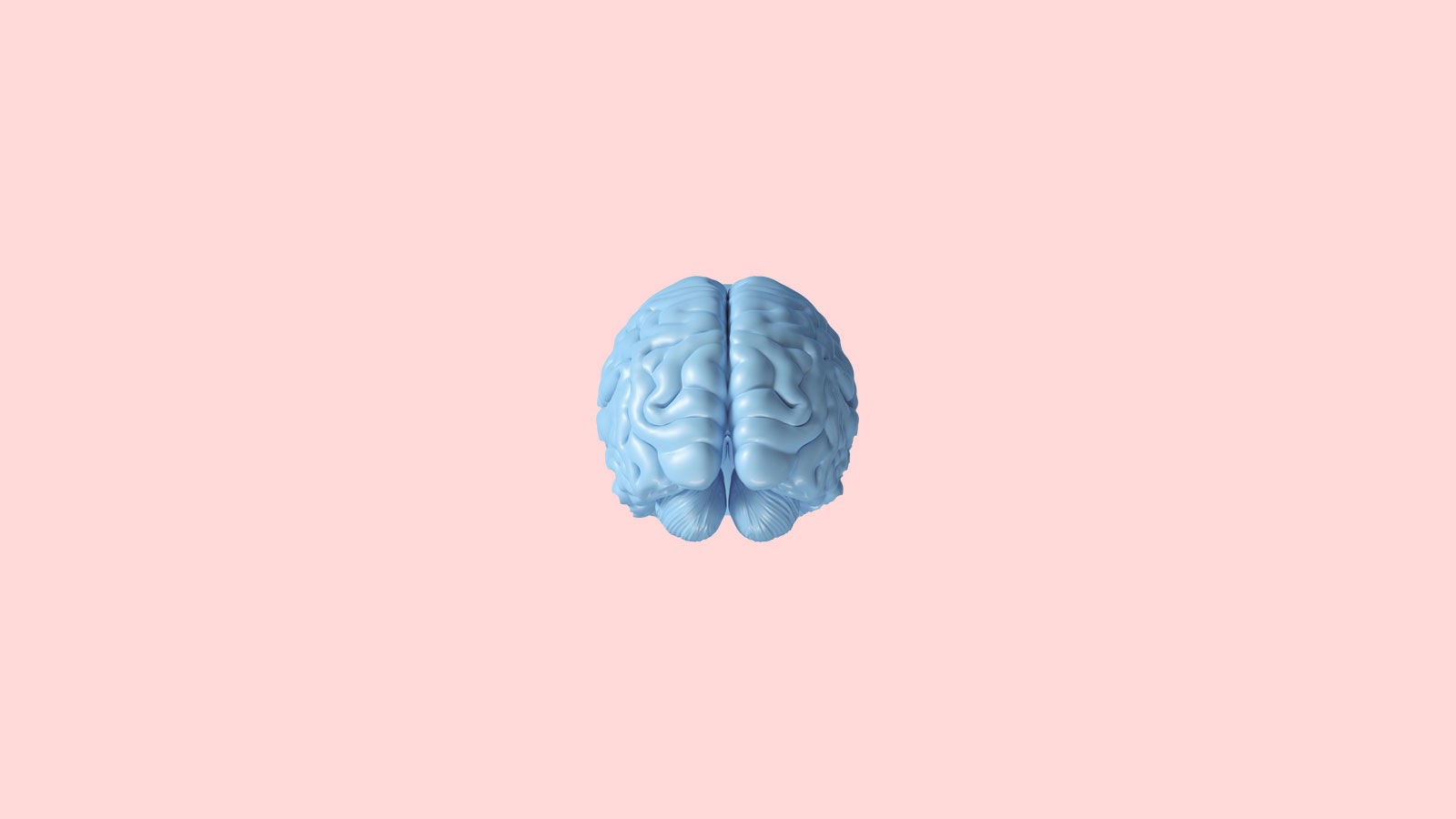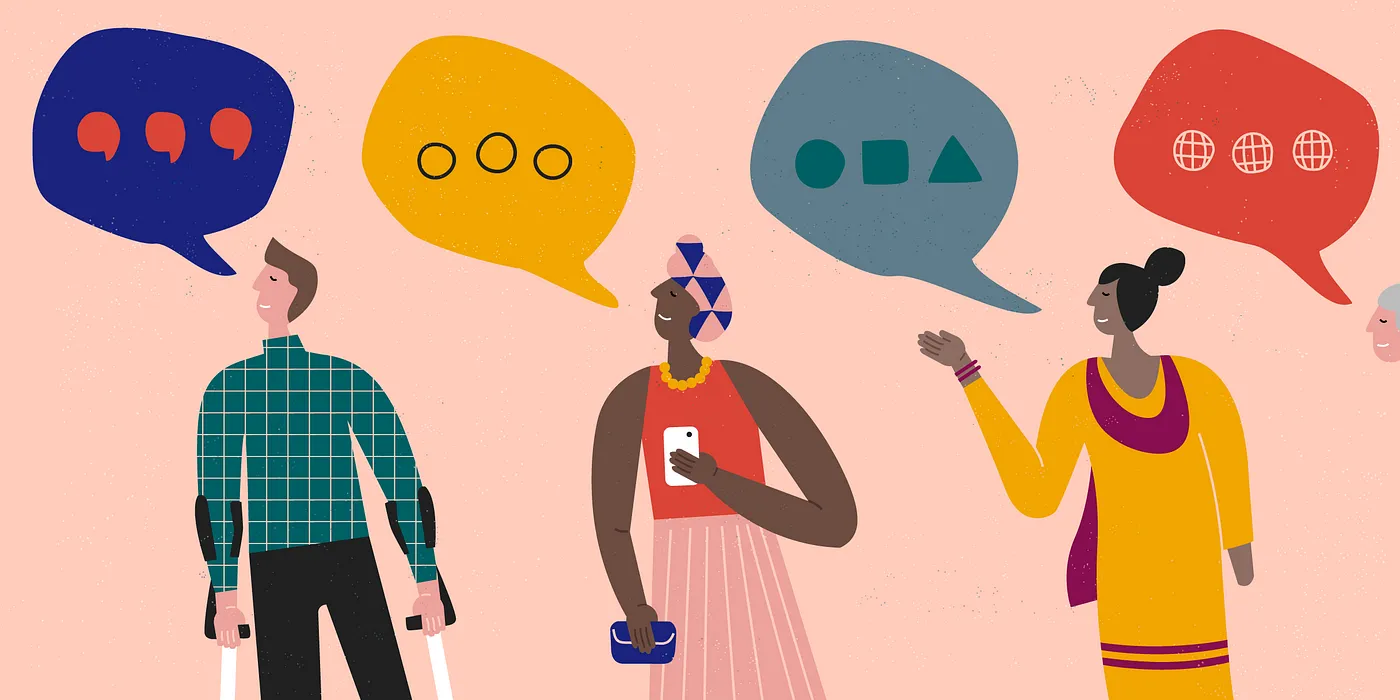Filter







Zsolt Szilvai
Article
100 Days of Deisgn
Is a design challenge only a waste of time or is it really worth it? Is it possible to gain useful skills by creating only nice interfaces without solving any real problems? There are many kinds of design challenges designers participate in, but what’s the point?
Is a design challenge only a waste of time or is it really worth it? Is it possible to gain useful skills by creating only nice interfaces without solving any real problems? There are many kinds of design challenges designers participate in, but what’s the point?
Is a design challenge only a waste of time or is it really worth it? Is it possible to gain useful skills by creating only nice interfaces without solving any real problems? There are many kinds of design challenges designers participate in, but what’s the point?
Is a design challenge only a waste of time or is it really worth it? Is it possible to gain useful skills by creating only nice interfaces without solving any real problems? There are many kinds of design challenges designers participate in, but what’s the point?
Is a design challenge only a waste of time or is it really worth it? Is it possible to gain useful skills by creating only nice interfaces without solving any real problems? There are many kinds of design challenges designers participate in, but what’s the point?
Is a design challenge only a waste of time or is it really worth it? Is it possible to gain useful skills by creating only nice interfaces without solving any real problems? There are many kinds of design challenges designers participate in, but what’s the point?







Promixty Lab
Video
Laws of UX: Using Psychology to Design Better Products & Services
Jon Yablonski provides a concise and practical overview of fundamental principles of user experience (UX) design based on human psychology and takes questions from the audience. His framework simplifies the often overwhelming amount of UX knowledge by organizing it around 10 core principles that are easily understandable and applicable.
Jon Yablonski provides a concise and practical overview of fundamental principles of user experience (UX) design based on human psychology and takes questions from the audience. His framework simplifies the often overwhelming amount of UX knowledge by organizing it around 10 core principles that are easily understandable and applicable.
Jon Yablonski provides a concise and practical overview of fundamental principles of user experience (UX) design based on human psychology and takes questions from the audience. His framework simplifies the often overwhelming amount of UX knowledge by organizing it around 10 core principles that are easily understandable and applicable.
Jon Yablonski provides a concise and practical overview of fundamental principles of user experience (UX) design based on human psychology and takes questions from the audience. His framework simplifies the often overwhelming amount of UX knowledge by organizing it around 10 core principles that are easily understandable and applicable.
Jon Yablonski provides a concise and practical overview of fundamental principles of user experience (UX) design based on human psychology and takes questions from the audience. His framework simplifies the often overwhelming amount of UX knowledge by organizing it around 10 core principles that are easily understandable and applicable.
Jon Yablonski provides a concise and practical overview of fundamental principles of user experience (UX) design based on human psychology and takes questions from the audience. His framework simplifies the often overwhelming amount of UX knowledge by organizing it around 10 core principles that are easily understandable and applicable.







Voltage Control
Article
The Five Phases of Design Thinking
Design thinking is a process for creative problem-solving that helps teams move past the first “good ideas” and discover creative solutions. Rather than a one-shoe-fits-all mindset, the design thinking approach encourages a holistic view where uncertainty and ambiguity are welcomed and embraced to consider all sides of a problem.
Design thinking is a process for creative problem-solving that helps teams move past the first “good ideas” and discover creative solutions. Rather than a one-shoe-fits-all mindset, the design thinking approach encourages a holistic view where uncertainty and ambiguity are welcomed and embraced to consider all sides of a problem.
Design thinking is a process for creative problem-solving that helps teams move past the first “good ideas” and discover creative solutions. Rather than a one-shoe-fits-all mindset, the design thinking approach encourages a holistic view where uncertainty and ambiguity are welcomed and embraced to consider all sides of a problem.
Design thinking is a process for creative problem-solving that helps teams move past the first “good ideas” and discover creative solutions. Rather than a one-shoe-fits-all mindset, the design thinking approach encourages a holistic view where uncertainty and ambiguity are welcomed and embraced to consider all sides of a problem.
Design thinking is a process for creative problem-solving that helps teams move past the first “good ideas” and discover creative solutions. Rather than a one-shoe-fits-all mindset, the design thinking approach encourages a holistic view where uncertainty and ambiguity are welcomed and embraced to consider all sides of a problem.
Design thinking is a process for creative problem-solving that helps teams move past the first “good ideas” and discover creative solutions. Rather than a one-shoe-fits-all mindset, the design thinking approach encourages a holistic view where uncertainty and ambiguity are welcomed and embraced to consider all sides of a problem.







Sabine VanderLinden
Article
Why Is Human-Centered Design Important?
Human-Centered Design (HCD) emphasizes empathy and iterative learning to create impactful, user-centric products, enhancing user satisfaction and business success through collaborative, inclusive approaches across various fields.
Human-Centered Design (HCD) emphasizes empathy and iterative learning to create impactful, user-centric products, enhancing user satisfaction and business success through collaborative, inclusive approaches across various fields.
Human-Centered Design (HCD) emphasizes empathy and iterative learning to create impactful, user-centric products, enhancing user satisfaction and business success through collaborative, inclusive approaches across various fields.
Human-Centered Design (HCD) emphasizes empathy and iterative learning to create impactful, user-centric products, enhancing user satisfaction and business success through collaborative, inclusive approaches across various fields.
Human-Centered Design (HCD) emphasizes empathy and iterative learning to create impactful, user-centric products, enhancing user satisfaction and business success through collaborative, inclusive approaches across various fields.
Human-Centered Design (HCD) emphasizes empathy and iterative learning to create impactful, user-centric products, enhancing user satisfaction and business success through collaborative, inclusive approaches across various fields.







Interaction Design Foundation
Article
Human-Centered Design (HCD)
Human-centered design prioritizes understanding and solving core human needs through iterative prototyping, testing, and refining, ensuring products meaningfully enhance lives.
Human-centered design prioritizes understanding and solving core human needs through iterative prototyping, testing, and refining, ensuring products meaningfully enhance lives.
Human-centered design prioritizes understanding and solving core human needs through iterative prototyping, testing, and refining, ensuring products meaningfully enhance lives.
Human-centered design prioritizes understanding and solving core human needs through iterative prototyping, testing, and refining, ensuring products meaningfully enhance lives.
Human-centered design prioritizes understanding and solving core human needs through iterative prototyping, testing, and refining, ensuring products meaningfully enhance lives.
Human-centered design prioritizes understanding and solving core human needs through iterative prototyping, testing, and refining, ensuring products meaningfully enhance lives.







Flux Academy
Article
Psychology in design: 9 principles designers should know
The article outlines nine psychological principles crucial in design, including Color Psychology, Hick's Law, Gestalt Principles, and others, aiming to enhance designers' understanding and application in crafting intuitive and impactful designs.
The article outlines nine psychological principles crucial in design, including Color Psychology, Hick's Law, Gestalt Principles, and others, aiming to enhance designers' understanding and application in crafting intuitive and impactful designs.
The article outlines nine psychological principles crucial in design, including Color Psychology, Hick's Law, Gestalt Principles, and others, aiming to enhance designers' understanding and application in crafting intuitive and impactful designs.
The article outlines nine psychological principles crucial in design, including Color Psychology, Hick's Law, Gestalt Principles, and others, aiming to enhance designers' understanding and application in crafting intuitive and impactful designs.
The article outlines nine psychological principles crucial in design, including Color Psychology, Hick's Law, Gestalt Principles, and others, aiming to enhance designers' understanding and application in crafting intuitive and impactful designs.
The article outlines nine psychological principles crucial in design, including Color Psychology, Hick's Law, Gestalt Principles, and others, aiming to enhance designers' understanding and application in crafting intuitive and impactful designs.







Daniel Tunkelang
Article
To Build Better Search, Develop Empathy With Your Users
Empathy is crucial in software development, particularly for search engines; developers should use their product, analyze user behavior through logs, and directly engage with users to understand and cater to their needs effectively.
Empathy is crucial in software development, particularly for search engines; developers should use their product, analyze user behavior through logs, and directly engage with users to understand and cater to their needs effectively.
Empathy is crucial in software development, particularly for search engines; developers should use their product, analyze user behavior through logs, and directly engage with users to understand and cater to their needs effectively.
Empathy is crucial in software development, particularly for search engines; developers should use their product, analyze user behavior through logs, and directly engage with users to understand and cater to their needs effectively.
Empathy is crucial in software development, particularly for search engines; developers should use their product, analyze user behavior through logs, and directly engage with users to understand and cater to their needs effectively.
Empathy is crucial in software development, particularly for search engines; developers should use their product, analyze user behavior through logs, and directly engage with users to understand and cater to their needs effectively.







Daniel Simon
Article
Designing with Accessibility in Mind: The Importance of Inclusivity in User Experience
Designing with accessibility in mind is essential for inclusivity, ensuring everyone, regardless of ability, can enjoy user-centered experiences, while also benefiting businesses by widening their audience and adhering to legal standards.
Designing with accessibility in mind is essential for inclusivity, ensuring everyone, regardless of ability, can enjoy user-centered experiences, while also benefiting businesses by widening their audience and adhering to legal standards.
Designing with accessibility in mind is essential for inclusivity, ensuring everyone, regardless of ability, can enjoy user-centered experiences, while also benefiting businesses by widening their audience and adhering to legal standards.
Designing with accessibility in mind is essential for inclusivity, ensuring everyone, regardless of ability, can enjoy user-centered experiences, while also benefiting businesses by widening their audience and adhering to legal standards.
Designing with accessibility in mind is essential for inclusivity, ensuring everyone, regardless of ability, can enjoy user-centered experiences, while also benefiting businesses by widening their audience and adhering to legal standards.
Designing with accessibility in mind is essential for inclusivity, ensuring everyone, regardless of ability, can enjoy user-centered experiences, while also benefiting businesses by widening their audience and adhering to legal standards.







TED
Video
The first secret of great design | Tony Fadell
This talk emphasizes the importance of noticing and solving the seemingly minor, yet impactful problems in everyday life, drawing on examples like the frustrating fruit stickers and the development of intuitive, user-friendly products at Apple, advocating for a mindset of continuous observation, creativity, and innovation.
This talk emphasizes the importance of noticing and solving the seemingly minor, yet impactful problems in everyday life, drawing on examples like the frustrating fruit stickers and the development of intuitive, user-friendly products at Apple, advocating for a mindset of continuous observation, creativity, and innovation.
This talk emphasizes the importance of noticing and solving the seemingly minor, yet impactful problems in everyday life, drawing on examples like the frustrating fruit stickers and the development of intuitive, user-friendly products at Apple, advocating for a mindset of continuous observation, creativity, and innovation.
This talk emphasizes the importance of noticing and solving the seemingly minor, yet impactful problems in everyday life, drawing on examples like the frustrating fruit stickers and the development of intuitive, user-friendly products at Apple, advocating for a mindset of continuous observation, creativity, and innovation.
This talk emphasizes the importance of noticing and solving the seemingly minor, yet impactful problems in everyday life, drawing on examples like the frustrating fruit stickers and the development of intuitive, user-friendly products at Apple, advocating for a mindset of continuous observation, creativity, and innovation.
This talk emphasizes the importance of noticing and solving the seemingly minor, yet impactful problems in everyday life, drawing on examples like the frustrating fruit stickers and the development of intuitive, user-friendly products at Apple, advocating for a mindset of continuous observation, creativity, and innovation.







Tanner Kohler
Article
Psychology for UX: Study Guide
The article is a study guide consolidating resources on applying psychological principles in UX design to create intuitive and effective user interfaces.
The article is a study guide consolidating resources on applying psychological principles in UX design to create intuitive and effective user interfaces.
The article is a study guide consolidating resources on applying psychological principles in UX design to create intuitive and effective user interfaces.
The article is a study guide consolidating resources on applying psychological principles in UX design to create intuitive and effective user interfaces.
The article is a study guide consolidating resources on applying psychological principles in UX design to create intuitive and effective user interfaces.
The article is a study guide consolidating resources on applying psychological principles in UX design to create intuitive and effective user interfaces.







Kate Moran and Kim Salazar
Article
The Vortex: Why Users Feel Trapped in Their Devices
The article explores "the Vortex," a user-behavior pattern where individuals feel trapped in a cycle of unplanned digital interactions, leading to a sense of loss of control and contributing to digital addiction.
The article explores "the Vortex," a user-behavior pattern where individuals feel trapped in a cycle of unplanned digital interactions, leading to a sense of loss of control and contributing to digital addiction.
The article explores "the Vortex," a user-behavior pattern where individuals feel trapped in a cycle of unplanned digital interactions, leading to a sense of loss of control and contributing to digital addiction.
The article explores "the Vortex," a user-behavior pattern where individuals feel trapped in a cycle of unplanned digital interactions, leading to a sense of loss of control and contributing to digital addiction.
The article explores "the Vortex," a user-behavior pattern where individuals feel trapped in a cycle of unplanned digital interactions, leading to a sense of loss of control and contributing to digital addiction.
The article explores "the Vortex," a user-behavior pattern where individuals feel trapped in a cycle of unplanned digital interactions, leading to a sense of loss of control and contributing to digital addiction.
Junkyard
Junkyard
Junkyard
Junkyard
Junkyard
Junkyard